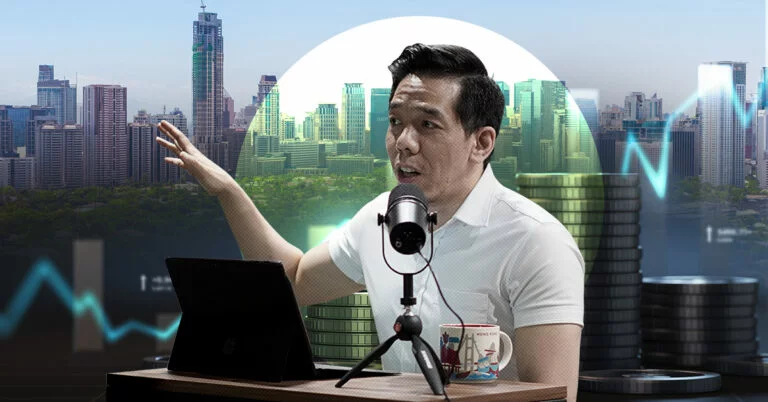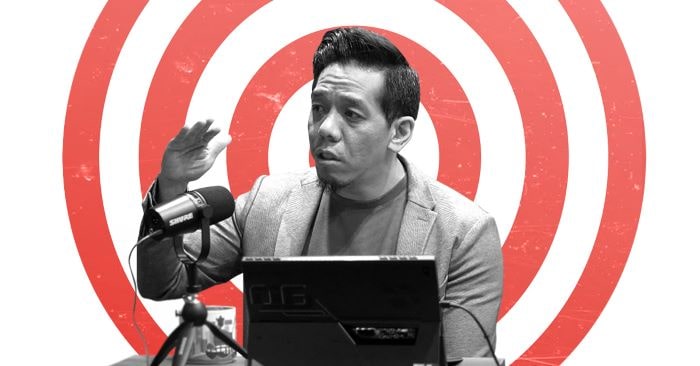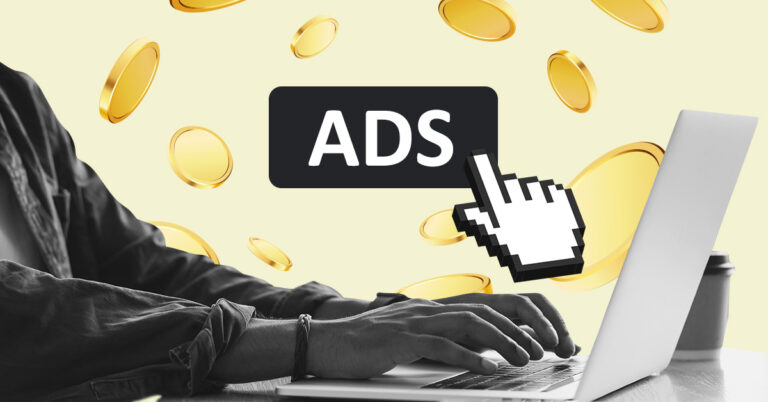Truelogic Episode 61 Recap: The Invisible Power of Your Social Media

In today’s world, likes and follows are not enough to sustain a brand’s online presence. To be successful in the digital landscape, companies need to understand how to leverage the power of social media to build brand legitimacy and drive lead generation.
Let’s dive into the importance of inbound marketing and lead generation marketing, and how social media ads can help promote your brand.
Podcast Transcription
Berns San Juan: Let’s talk about social media or to be more precise, the invisible power of your social media. So, you know, editor’s note. This is a Truelogic story, so I’m going to share with you some statistics about Truelogic’s performance as a brand and how it gets impacted by your social media channel now.
For most of you that do social media, I think we’re all aware of how we tend to use social media either at the top of the funnel, like for brand awareness, for product promotion, or how we use it at the bottom of the funnel, right? To generate inquiries, to get appointments, to capture leads. But more often than not, I get dragged into conversations about how I get more likes. How do I get more followers? How do I get more page views? And I think the bottom line to this conversation is that likes and follows are not goals. They’re mid-funnel metrics.
So yes, they’re metrics, but they’re not goals. So, hi everybody. Thank you for joining us for another episode of the Truelogic DX podcast, and today we’re going to talk about the invisible power of your social media presence. So let’s get started. And, you know I’m going to lean heavily on the strategy that drives the marketing for Truelogic.
I think for every brand that markets it is essential for you to understand who you are in a market, what problems you solve in a market, and who you solve it for. I think a lot of people go into marketing without necessarily nailing all of those down, and it’s super essential that you nail those down. I like to tell clients a brand that, like when, I think for most SEOs, the biggest challenge we have is every client you talk to will want the keyword with the largest search model.
That’s always the challenge. And when you ask them why, right? Whose problem are you trying to solve and why do you wanna rank for that keyword? You really sort of don’t get a really good answer, except they wanna maximize their traffic first. As an SEO company, your job is to educate your clients, to educate their prospects, and your leads. Highly competitive keywords and high search volume keywords take about seven to 12 months to mature. If, right the word SEO will, will take you two years to appear on the first page. So it’s a marathon. Not a race, but right. All marketing is content. And in Truelogic, we split the marketing activity into two things.
One is inbound marketing, where the goal is to generate inbound leads and lead generation. So we have lead gen marketing, and the lead gen marketing is, as you can assume, separated into our SEO because we’re good at it. Our AdWords is our search network. Our display network, and you know, banners on YouTube and whatnot, and some social media ads, but a majority of our social media budget currently, it used to does not go to lead generation.
It goes to promotion. So one of our marketing activities is lead generation, but the other marketing activity is content marketing or content promotion, what does that mean? And this is why we get into the branding conversation. This is where why we are going into the customer avatar conversation.
What problem do you solve? Who are you in the market? What problem do you solve and for whom? A brand that talks to everybody, talks to nobody. So I’ll repeat that. A brand that talks to everybody, talks to nobody. It is super important that you understand who you are in the market, who your audience is, how you solve their problems, and how you uniquely solve their problems.
So in content marketing or promotion marketing, what we do is we sort of plan out all of the content, and you know, the content that appears on our LinkedIn, YouTube podcast channel, and social media channel are all synced, right? If we create a long-form blog about something, it will have a shorter carousel version on social media.
It’ll have a shorter single-image post on social media. It’ll have a serious thought leadership snippet that goes on LinkedIn, it’ll get a YouTube short or it might get a more humorous version on social media promotion. But suffice it to say that all of that content is synced, right? All of that content is synced.
If we’re talking about the power of your brand, then we talk about branding for a couple of weeks across all channels. And then if we’re talking about earning referrals, then we’re talking about referrals for the next few weeks, and we’re talking about SEO, then we’re talking about SEO for the next few weeks.
If we talk about display and remarketing, then we’re talking about display and remarketing for the next few weeks. So we try to be as consistent as we can. Across the board on all our channels. Now I remember, and for any of you that might have known me for a while, I am an SEO by brain I am proudly an SEO in the same way that I am proudly Philippine-made.
I am proudly an SEO. When I look in the mirror, I see an SEO. So this is what I like to do. Yes, I see a marketer, yes, but you know I’m good at SEO. Like I can do social, I can do AdWords, but when I do those, my time doesn’t fly. When I do SEO, an hour, two hours, three hours, four hours can fly by and you know, just like that done.
I thoroughly enjoy being an SEO. And when our marketing manager told me, and this is like maybe circa two years ago, in the middle of the pandemic, right, where she did a market comparison against us in our competitors. And where she was saying you, you know, where the grass is greener on social because it seems like all search companies are ignoring the social field.
And that’s where the grass is greener. Like we need to be present there. And of course, I’m like whatever. Like I am a social skeptic, right? There’s no denying it. I am a fan. But I am very skeptical of society simply because when you do SEO, you can see what keyword somebody typed in.
You can see which page they landed in, how they engage the page, what button they click, and how many times did they have to go back before they gave you their name, their email address, their name, their phone number, and then whatnot, right? And then you can measure them in your sales funnel after that, cuz they’re now a lead.
But you can see the entire customer journey clearly right from start to finish, from brand awareness to close retention to loyalty, sometimes even all the way to referring other customers. So terrific. And in social media, there’s just a lot of blind spots, right? The other challenging thing with social media is that a lot of it is psychology.
A lot of the content for social media is about psychology. Yes, there’s budget management. Yes, there’s audience optimization, but messaging optimization is about understanding the psychology of your customer. I would say, can you get away with SEO without understanding what your brand archetype is and what your customer avatars are?
Absolutely right. If you rank for enough keywords with large enough search volumes, you’re gonna cast a very wide net and you’re gonna bring in the leads, right? Till today, 70% of all prospects that Truelogic will talk to come from organic, right? So where does social media come in? So I told you, guys, about how all of the content is seen, right?
So we create a strategy on a monthly basis. We talk about the topics that we will fixate on for that period. We decide what format the hero content is on. Take for example, if you’re listening to this podcast might very well be the hero content for a month, if not the next two weeks. But this might be the hero content.
And then we try to find out, okay, so how do we create hub content around this hero content? How do we create the teasers and the extras from a podcast episode, right? And then we craft those and then we decide. Okay, which channels do we promote it on? Right? And this is where social media comes in because your promotion channels are PR, right?
Like you can do press releases, you can do newsletters, whether they’re nurturing or not. Your blogs are obviously organic, so SEO you can land people in specific dedicated landing pages that you will create ads for. You can promote it via Facebook ads. For some of you guys that are listening to this podcast, the beginning of your journey might have been a really nice YouTube short, might have been a really nice, which we count by the way, on social.
Might have been a YouTube short or your entry into the, into listening to this podcast might have been a paid promotion that we had on Facebook. And then, of course, an AdWords campaign, but an AdWords campaign mostly on search. We just discovered that we get better bang for our buck that way. Aside from using SEM display, SEO, and social media to drive leads to drive a constant stream of inbound leads to the website, we do promotion so, Ella convinces me, or, you know I think one of the things that we like to do is we’re very open-minded.
We’re always willing to experiment and, you know, the buckets, we’re not talking like 2 million pesos, 5 million pesos in social media promotion, we’re talking several thousand. But it’s a great experiment to run with to find out. Okay, let’s take a look at this area of this digital channel that we have not been maximizing for a while.
Now, we start doing the Truelogic DX webinar series, which is the hero content for the social content. We start doing the Truelogic DX podcast. We start creating single-image marketing tips like we do, we actually have themes. For Monday, Tuesday, Wednesday, Thursday, and Friday. There are themes that we follow for each day of the month.
They’ve got you to follow us and you already know what we’re talking about. If you’re one of the 16,000 people that follow us. Oh, and thank you. Now, why did I say we were going to talk about the invisible hand on social media? Because fast forward. From that conversation two years ago to current, we were evaluating, okay, what value do we derive from social media?
Cuz we’re not doing social media just so that we can say we’re present on social media. Again, likes and follows are not goals. They’re metrics, they’re numbers that you ought to look at up. And yes, there are numbers that you ought to manage, but these are not goals. Having a caboodle of followers, having a caboodle of does not necessarily translate well to a caboodle of business.
Fast forward two years later and we do get leads from social media. There are people that send us inquiries on social media, absolutely understandable. Based on the audience we talk to, they’re not likely to. Start their buyer’s journey with us on a social media channel. Not likely because the people that will talk to us are millennial marketers, not Gen Z people yet, but millennial marketers, like the people that are marketing champions in their organizations, marketing influencers in their organizations, marketing decision-makers in their organizations, or they’re Gen X, decision-makers.
We don’t talk to the baby boomers. The Gen Xers will do that for us. The millennials will do that for us. But we talk to Gen X decision-makers and millennial champions. We also know they will very likely talk to us all the way from Monday afternoon to Friday morning, See and so, yes, they don’t talk to us Monday mornings and they don’t talk to us late Friday afternoons like that’s super rare, but they will talk to us like the peak conversation time for us is between about Tuesdays to Thursdays within office hours, right? And that sort of makes sense because digital marketing is a B2B service. A business is the one that needs it. And so you are likely to start your conversations during office hours.
These people will likely talk to you about the hours they’re paid, on the hours they’re at work, right? This is why a generous chunk of the traffic on the Truelogic website still comes from desktops, right? Yes, we’ve got a big chunk on mobile, but we’ve still got a large chunk on desktop.
So when we were looking at it and we were doing a count of, okay, let’s see where social media contributes, let’s take a look at where social media contributes to our lead generation efforts, to our customer acquisition efforts. And you know, after six months, like nothing. Right. So after six months, nothing.
And then we saw one, and then we saw two, and then we saw none, and then one, and then two, and then none, and then two. Right. So just by listening to the metrics I’m going by you’re going to think you’re probably thinking and you wouldn’t be wrong. Well, that’s not very inspiring.
Okay, so here’s the climax of this conversation. As we usually do, we review the performance of every group in the company and we take a look at our metrics and we try to see, okay, what did we do right? What would, could we have done better? And while I’m pleased about the performance of our sales team, the total number of contract acquisitions they made in the last two years, including the current year has been incredible.
The number of new clients and engagements they acquire is outstanding. I know that the area, I’ve always known that the area for improvement with them, like especially in the local scene, the amount of time it takes to close a contract can be ginormous, right? I think our current record holder is about 433 days.
Right from the start of the first conversation to closing the deal. So we take a look at our main performance or actually we took a look at our average performance. And what we realized in 2020 was that the average lead time between contact to the closing of a contract was about 121 days.
Us and we set a goal of reducing that to about less than a hundred days. And so, you know, they almost made it, they got it to 101. But while we were reviewing our data we saw that the average time for a contract to close shrank from 101 to 89 days to 82 days. Our average time to close a contract from the first convo to seal the deal is about 45.
By the way, guys, it can be as fast as eight days, right? So it can be pretty quick. We still get deals where we talk to them today, and then we’ve got the contract next week. And so I’m giving you averages. Our average lead conversion time used to be 101. It dropped down to 89, it dropped down to 82.
We dropped to a little less than 60 down to 48 down to its current of 45, which is not bad. And what we were looking for is where we attribute that, right? Like how did we do that? What happened? And sure. There’s training, there’s better management, there are better tools. Great.
That didn’t explain all of it. And what we realized was the long lead conversion time is, this is our pre-social media promotion days, while we might not be getting leads from social media channels, we never really appreciated that people researched us on Facebook, they researched us on LinkedIn, they look for us on YouTube and whatnot.
I can’t even count the number of times I’ve hopped on a call. I’m trying to explain a proposal, and then the person I’m talking to is saying, oh no, I get it cuz I listened to your podcast and we’re like, what? Right. So that always blows me away. And there are several instances where the lead reached out to us from our organic pages, but they had heard about us, the brand, through our social media channel.
Legitimacy is the Invisible Hand of Social Media

The punchline to this conversation is, The invisible hand of your social media presence is legitimacy. People don’t go to Google unless they’re motivated. Try not to eliminate the fact that people do research on Facebook and they do research on LinkedIn, right? And they use all of these other channels, and when you are consistently present with the same tone of voice, with the same kind of content across multiple channels, the impact it has.
As is on your legitimacy. For us, it’s not about the number of likes. Like I, I’m so proud that we went from I dunno, 24 likes right back, way back in 2020, I think we went from 24 likes and we got over 10,000 in over a year. Last year we earned about 6,000 more followers, and so we’re currently at about 16,000 if I’m not mistaken, my marketing team can correct me on this. I think we might be the digital marketing company with the largest following on Facebook and the most likes on Facebook, so I’m proud of that. But the metric that move the business metric, that move was our lead conversion time because we were visibly more consistent, more relevant, and easier to search for.
We went from taking three months to closing a contract from the initial conversation, down to a month and 10 days. So don’t ignore the present. Don’t ignore your social media channels. They are great signals of legitimacy. Don’t get fixated on your likes. Don’t get fixated on your follows. Don’t get fixated on your impressions.
Don’t get fixated on your views. These are metrics. Your goal is to impact the business metric, and in our case, the business metric that our social media channel impacts is our legitimacy. And our legitimacy is measured in how fast we can close someone because, by the time they talk to us, they are already impressed by the brand.
With that being said, you know enough humble brags. I want to thank you for joining us for another episode of the Truelogic DX podcast. If there are more topics you’d like us to explore, if there are topics you’d like us to revisit. Subscribe to our Spotify, Google, and Apple accounts. We are on Facebook, LinkedIn, and YouTube.
If you have not subscribed to us yet, feel free to subscribe to the Truelogic DX podcast to get new alerts for new episodes. I think there’s a new episode every Tuesday, and thank you very much to our friends at Podmachine for continuing to power these podcasts. Until the next episode, thank you very much.










